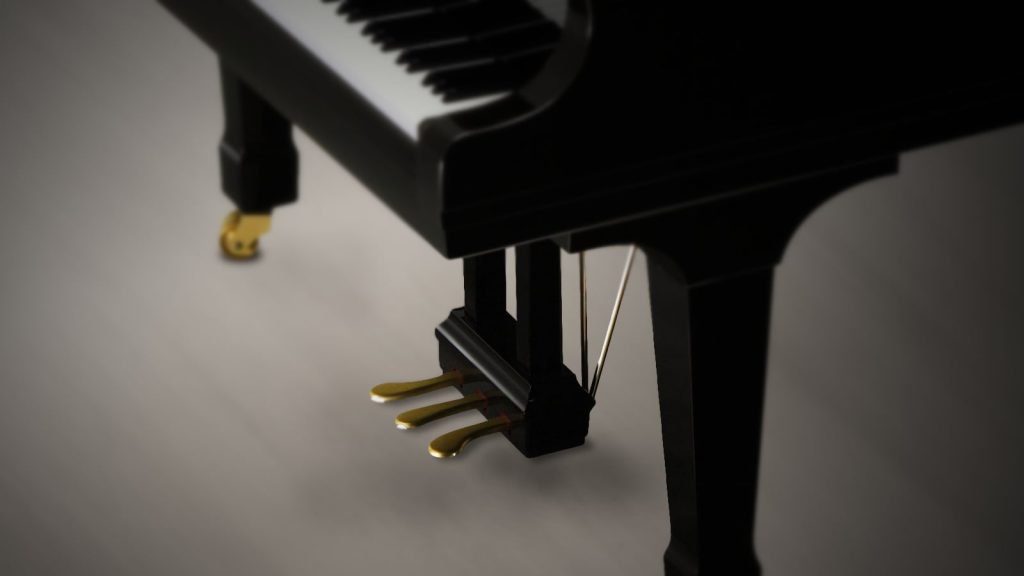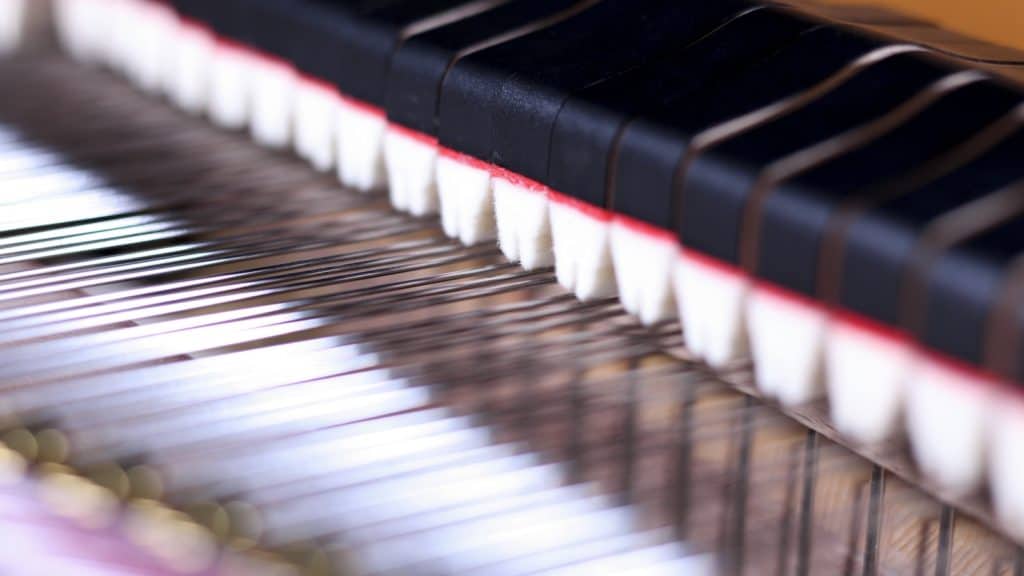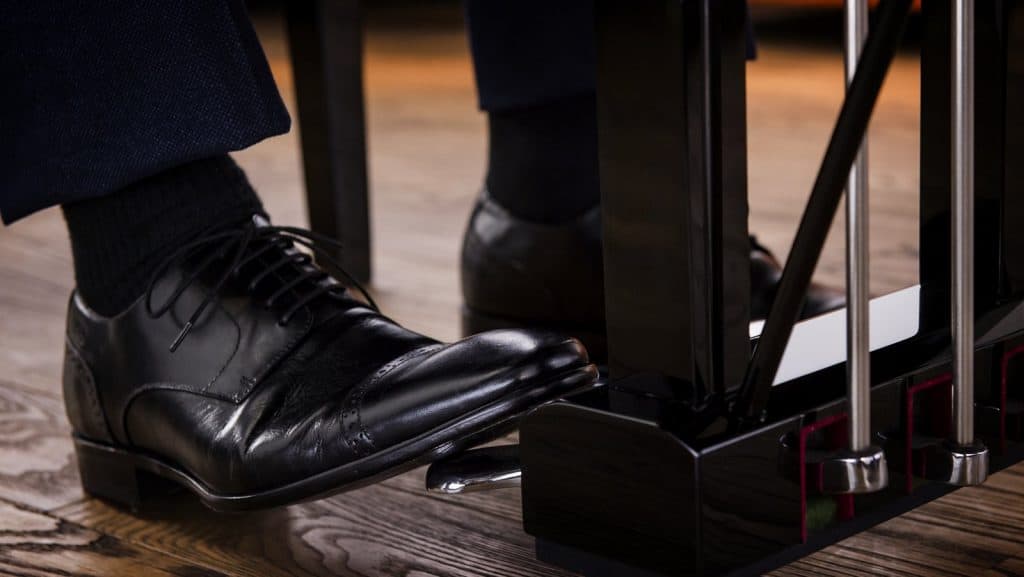The Half-Pedal Technique
Another important piano technique: The sustain pedal works continuously between not being depressed at all and being fully depressed. Used to add a slight resonance to individual notes, this takes advantage of a property of the damper mechanism: Partially depressing the sustain pedal will only slightly raise the piano’s dampers. The damper action is marginally reduced, allowing for a softer resonance. The harder you depress the pedal, the longer a note becomes.
For more information, see this article about half-pedaling: The Half-Pedal Technique on Acoustic and Digital Pianos
This technique also works on many digital pianos, depending on whether the instrument supports the half-pedal function. Entry-level instruments in particular differ significantly in this regard. Some instruments don’t support it at all – after all, it’s not that important for complete beginners to play the piano using the sustain pedal. Some portable pianos support the half-pedal function in principle but include only a simple on/off pedal. In this case, you can purchase a dynamic sustain pedal as you improve your technique.
Learn more: Digital Piano Pedals: Buying a Sustain Pedal




